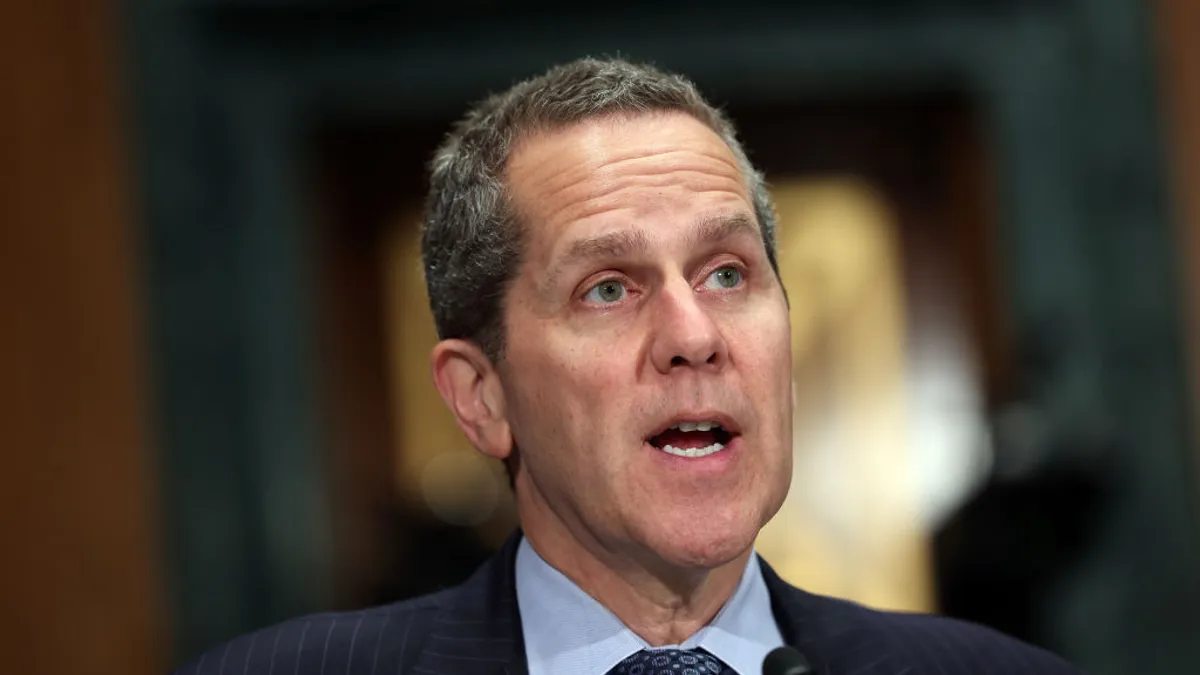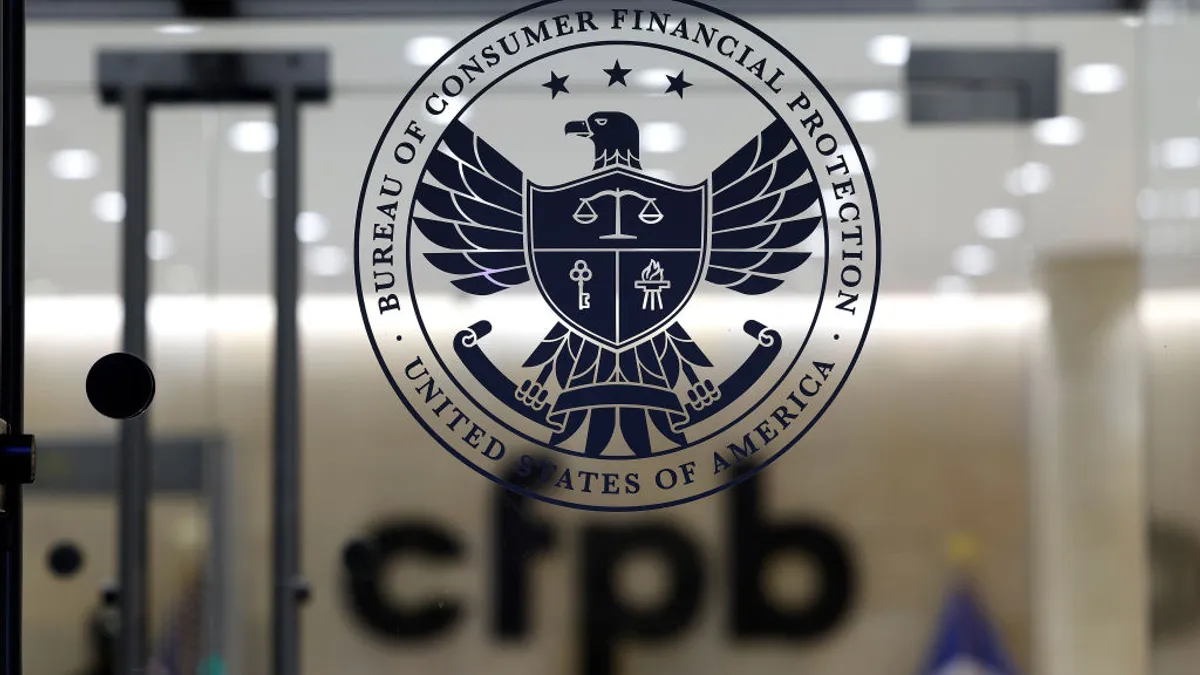A Monday speech by Randal Quarles, the Federal Reserve’s vice chair for supervision, made clear that the central bank’s leaders are far from unified on the need for a Fed-originated digital currency.
"Especially when coupled with an equally American susceptibility to boosterism and the fear of missing out, [Americans’ enthusiasm for novelty] has also sometimes led to a mass suspension of our critical thinking and to occasionally impetuous, deluded crazes or fads," Quarles told the Utah Bankers Association’s annual convention, clarifying that he was speaking only for himself and not for the Fed’s board of governors. "Sometimes the consequences are, in hindsight, merely puzzling or embarrassing, like that year in the 1980s when millions of Americans suddenly started wearing parachute pants. But the consequences can also be more serious."
The potential benefits of a Fed-backed digital currency are "unclear," Quarles said, but the risks may be "significant and concrete."
Proponents tout that central bank digital currencies (CBDCs) may increase financial inclusion. People who don’t have bank accounts because they don’t trust the banking system or find accounts cost-prohibitive could use the Fed system to transfer money back and forth, some argue.
Quarles countered that the proportion of households in the U.S. that are unbanked dropped from 8.2% to 5.4% between 2011 and 2019, and that banks and regulators are working to further lower that number through efforts such as the promotion of Bank On accounts through the Cities for Financial Empowerment Fund.
"I believe we can promote financial inclusion more efficiently by taking steps to make cheap, basic commercial bank accounts more available to people for whom the current cost is burdensome," he said.
Creating the infrastructure to support a Fed-backed digital currency also would be expensive, need congressional sign-off and may duplicate the systems already in use by commercial banks, Quarles said.
"An arrangement where the Federal Reserve replaces commercial banks as the dominant provider of money to the general public could constrict the availability of credit, fundamentally alter the economy and expose the public to a host of unanticipated, and undesirable, consequences," he said, including making the Fed a target for money laundering.
Quarles blasted the notion that the development of a CBDC might spur innovation, countering that the Fed’s effort, if it progresses, may in fact stifle creativity.
"It seems to me that there has been considerable private-sector innovation in the payments industry without a CBDC, and it is conceivable that a Fed CBDC, or even plans for one, might deter private-sector innovation by effectively 'occupying the field,'" Quarles said. "A dominant CBDC could undermine the consumer and other economic benefits that accrue when commercial banks compete to attract customers."
Quarles’s comments come as Federal Reserve Chair Jerome Powell has shifted his stance regarding CBDCs against a backdrop in which several other countries — most notably, China — have moved closer to issuing such coins on a mass scale, and amid fears that the dollar may lose its primacy among world currencies as other central banks’ digital efforts surpass the U.S.’s.
Powell long held a "wait-and-see" approach on CBDCs. He told a panel at the International Monetary Fund in October he’d rather "get it right" than "be first" in researching and developing a Fed-backed digital coin. In March, he told a virtual panel held by the Bank for International Settlements (BIS) the U.S. has "an obligation to be on the cutting edge of understanding the technological challenges, as well as the potential costs and benefits, of issuing a CBDC" but "because we’re the world’s principal reserve currency, we don't need to rush this project."
But Powell shifted last month, teasing an upcoming Fed paper on CBDC development that he said would "stimulate broad conversation." At the same time, a Boston Fed executive leading the effort to develop CBDC prototypes, alongside Massachusetts Institute of Technology (MIT) researchers, indicated he could unveil some of their work as early as next month.
Despite that momentum, Quarles said, it shouldn’t be a foregone conclusion that the Fed would issue a CBDC — although he admitted the pressure to create a CBDC makes for a "high bar."
"Our work is cut out for us as we proceed to rigorously evaluate the case [for development]," Quarles said. "Even if other central banks issue successful CBDCs, we cannot assume that the Federal Reserve should."
Two organizations tied to central banks issued reports assailing the proliferation of digital tokens. The Basel Committee on Banking Supervision, which includes the Federal Reserve and the European Central Bank, this month recommended the highest possible risk weighting — 1,250% — be applied to banks’ exposure to Bitcoin and other cryptocurrencies.
The BIS then issued a report last week asserting that "innovations such as cryptocurrencies, stablecoins and the walled garden ecosystems of big techs all tend to work against the public good element that underpins the payment system."
Quarles on Monday said stablecoins pose no reason for fear.
"A global U.S. dollar stablecoin network could encourage use of the dollar by making cross-border payments faster and cheaper, and it potentially could be deployed much faster and with fewer downsides than a CBDC," he said. "And the concern that stablecoins represent the unprecedented creation of private money and thus challenge our monetary sovereignty is puzzling, given that our existing system involves — indeed depends on — private firms creating money every day."
He was less kind to cryptocurrencies.
"Gold will always glitter, but novelty, by definition, fades," Quarles said. "Bitcoin and its ilk will, accordingly, almost certainly remain a risky and speculative investment rather than a revolutionary means of payment, and they are therefore highly unlikely to affect the role of the U.S. dollar or require a response with a CBDC."
As for the dollar’s primacy, he said, it "rests on a number of foundations": the U.S. economy’s strength, its trade ties and monetary policy writ large.
"None of these are likely to be threatened by a foreign currency, and certainly not because that foreign currency is a CBDC," Quarles said.





















